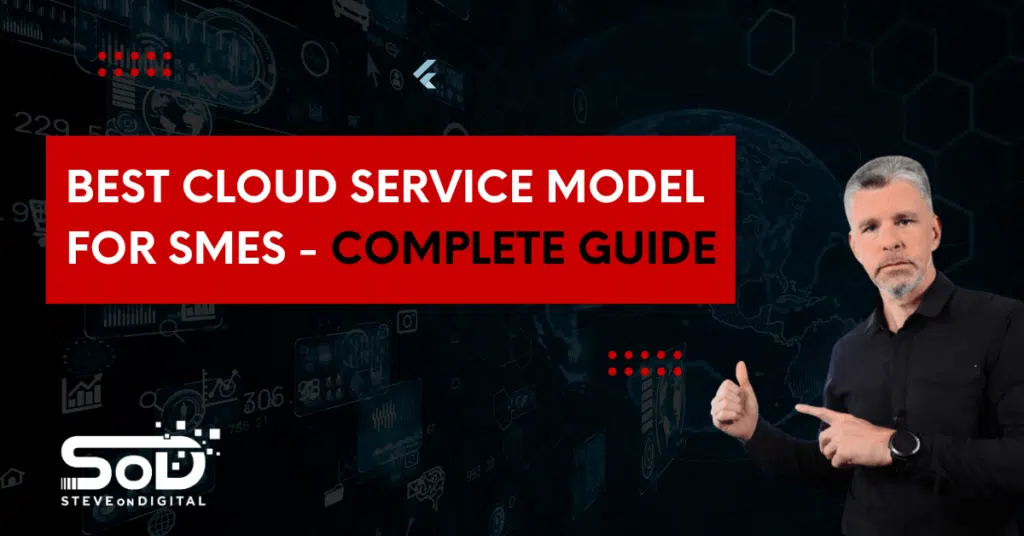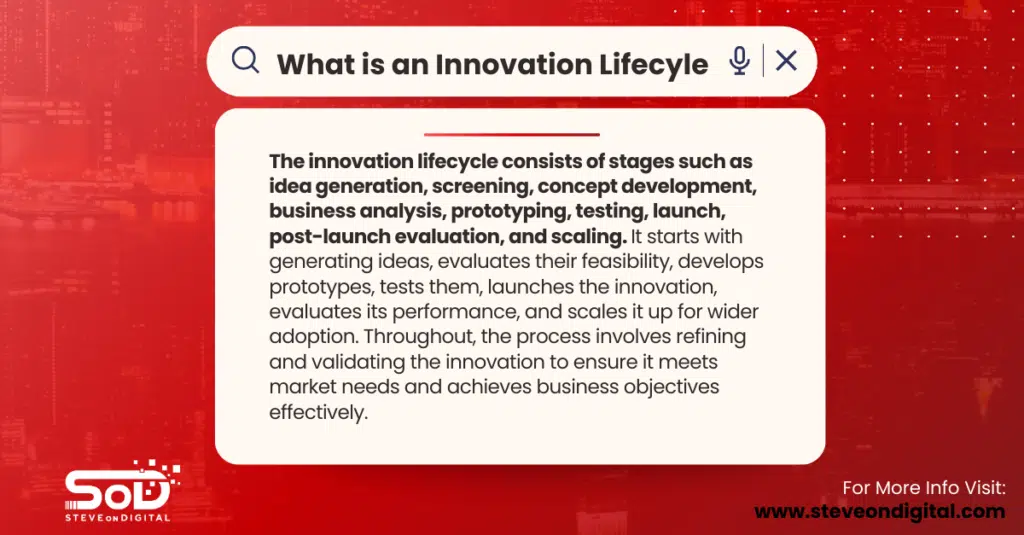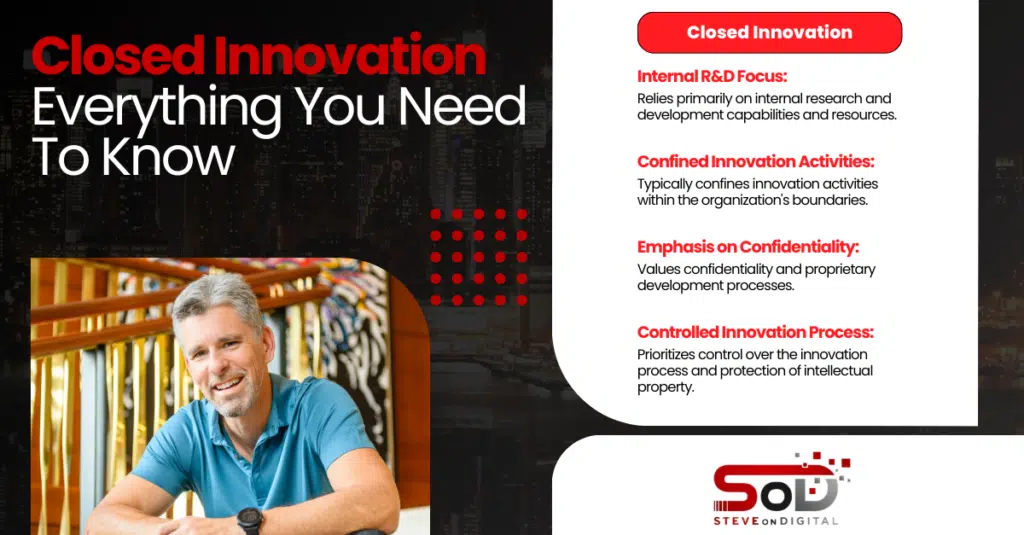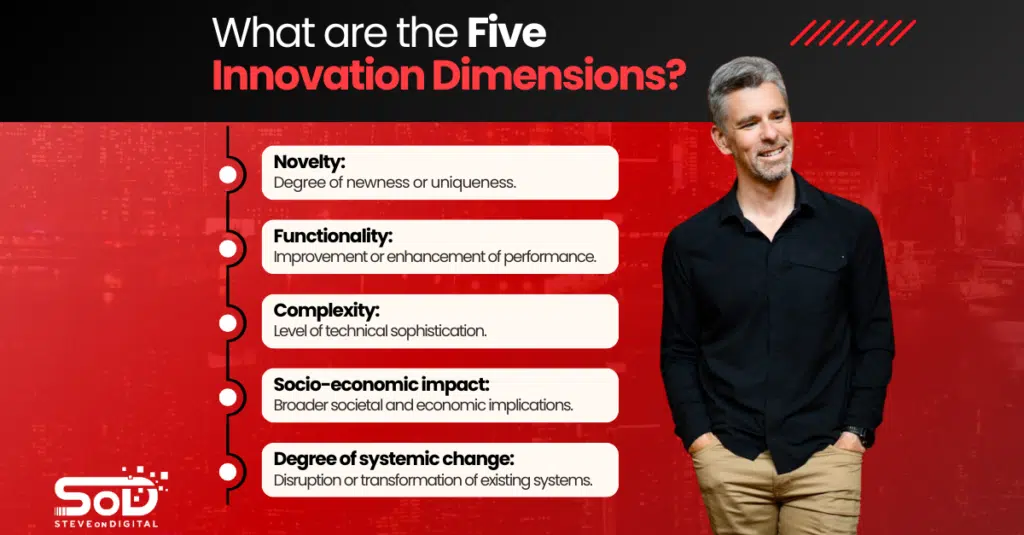Which Cloud Service Model Is Best For Small Business?

As Steve Johnston, a seasoned Digital Transformation Specialist with a robust background in electrical engineering, an MBA, and a master’s in Project Management, I have dedicated my career to empowering small and medium-sized enterprises (SMEs) through digital innovation. My goal is to guide 1,000,000 business owners and IT directors through the intricate digital landscape, offering actionable advice and insights from real-world experiences. Cloud Computing For SMEs Cloud computing has revolutionized the way businesses operate, offering a plethora of benefits that are particularly advantageous for SMEs. At its core, cloud computing provides accessibility, scalability, and cost-efficiency, three pillars that support the growth and agility of small businesses in today’s digital economy. Accessibility ensures that vital business data and applications are available anywhere, anytime, as long as there’s an internet connection. Scalability allows businesses to adjust their resources based on current needs, avoiding unnecessary expenses on infrastructure that isn’t in use. Most importantly, the cost-efficiency of cloud computing eliminates the need for substantial upfront investments in hardware and software, leveling the playing field for SMEs competing against larger corporations. Service Models Overview In the realm of cloud computing, three primary service models stand as the backbone for businesses seeking to harness the cloud: Software as a Service (SaaS), Platform as a Service (PaaS), and Infrastructure as a Service (IaaS). Each model offers a unique set of resources and services, designed to cater to different business needs and technical capabilities. SaaS delivers software solutions via the internet, eliminating the need for installations and maintenance. PaaS provides a platform allowing businesses to develop, run, and manage applications without wrestling with the complexity of building and maintaining the infrastructure typically associated with the process. Lastly, IaaS offers comprehensive control over computing resources hosted in the cloud, presenting businesses with a virtualized hardware over which they can run whatever operating systems and applications they choose. The Selection Challenge Selecting the right cloud service model is critical for SMEs to maximize the benefits of cloud computing. The decision should be informed by a clear understanding of the business’s specific needs, technical capabilities, and future growth plans. It’s not just about adopting cloud services; it’s about choosing the model that aligns perfectly with your business strategy to foster growth, innovation, and competitiveness. Understanding Cloud Services For Small Businesses Basics Of Cloud Services Cloud services fundamentally transform how small businesses access and utilize computing resources. By offering on-demand access to computing resources over the internet, cloud services eliminate the need for SMEs to invest in and manage physical servers or other infrastructure. This encompasses not just cloud storage, where data can be securely stored and accessed from anywhere, but also the broader spectrum of cloud service models like SaaS, PaaS, and IaaS. These models provide a range of services from software applications to complete computing platforms and infrastructure, all available over the web with pay-as-you-go pricing. Importance For SMEs For SMEs, the shift to cloud computing is not merely a technological upgrade; it’s a strategic transformation that can redefine the entire business landscape. This transition to cloud services can significantly reduce upfront costs associated with purchasing and maintaining IT hardware and software. Furthermore, the scalability offered by cloud computing means that SMEs can easily adjust their computing resources to match their business demands, ensuring they’re not paying for idle resources. Perhaps one of the most compelling benefits of cloud computing for SMEs is the facilitation of remote collaboration. With data and applications available online, teams can collaborate in real-time from anywhere in the world, breaking down traditional barriers to productivity and innovation. Comprehensive Exploration Of Cloud Service Models In my journey as the Digital Transformation Specialist behind SteveOnDigital, I’ve navigated through the vast expanse of cloud computing, applying its principles to help small and medium-sized enterprises (SMEs) achieve significant milestones. Here, I dive deep into the three main cloud service models, drawing from my own experiences and industry standards to shed light on which cloud service model is best for small businesses. Let’s explore the core models: Infrastructure as a Service (IaaS), Platform as a Service (PaaS), and Software as a Service (SaaS). Infrastructure as a Service (IaaS): Definition And SME Benefits IaaS offers a virtualized computing infrastructure managed over the internet. For SMEs, this model is a game-changer. It eliminates the need for hefty investments in physical hardware, providing businesses with the flexibility to rent computing resources such as servers, storage, and networking capabilities. The key benefits for SMEs lie in the unparalleled control, customization, and scalability it offers. Businesses can tailor their computing resources to meet specific needs and scale these resources up or down based on demand, ensuring cost efficiency and agility. Examples And Ideal Use Cases Prominent examples of IaaS include Microsoft Azure and Amazon Web Services (AWS). These platforms are ideally suited for businesses that require specific control over their computing environment and have the IT expertise to manage and configure their infrastructure. IaaS is perfect for companies looking to run high-performance applications, store large volumes of data, or have unique security requirements. Platform as a Service (PaaS): Definition And Ideal Use PaaS provides a framework for developers to build upon and create customized applications. This cloud service model offers a development platform and a set of tools to simplify the process of coding, testing, and deployment of applications. The beauty of PaaS lies in its pre-configured features and ease of app deployment, allowing developers to focus on the creative side of application development without worrying about the underlying infrastructure. Examples And Considerations Google App Engine and Azure App Service stand out as prime examples of PaaS. These platforms cater to businesses with some level of technical know-how and those looking to develop, run, and manage applications without the complexity of building and maintaining the infrastructure. PaaS is ideal for companies aiming to create customized applications or those that require a collaborative environment for multiple developers. Software as a Service (SaaS): Definition And Advantages For SMEs SaaS revolutionizes software usage by providing access
What Is The Impact Of Digitization On SMEs?

Hello, I’m Steve Johnston, the person behind SteveOnDigital. Today, I want to share my insights into a transformation that’s not just reshaping the landscape of small and medium enterprises (SMEs) but is also a testament to our adaptability and resilience in the digital era. Digitization, a term we often hear, has become integral to our economic and social fabrics, influencing how we live, work, and interact. In the ever-evolving business environment, digitization stands as a beacon of progress, efficiency, and growth. For SMEs, which are the backbone of many economies, understanding and integrating digital technologies is no longer optional; it’s a necessity. The digital transformation journey for SMEs isn’t just about adopting new technologies; it’s about rethinking old models, enhancing customer experiences, and finding new avenues for growth. It’s a comprehensive overhaul of how businesses operate, deliver value, and sustain growth. The Essence Of Digitization For SMEs Understanding Digitization At its core, digitization refers to the process of converting information into a digital format. In the business context, this extends far beyond mere digital data conversion. It encompasses the adoption of digital technologies to change business models, improve operational efficiencies, and create value-producing opportunities. For SMEs, digitization is not just an upgrade; it’s a strategic overhaul that touches every aspect of the business. For us at SteveOnDigital, digitization is a familiar terrain. Having navigated the digital landscape across various sectors, I’ve witnessed firsthand the transformative power of digital technologies. Whether it’s through streamlining operations with cloud computing or reaching new markets through digital marketing, the scope of digitization within SMEs is vast and varied. From Traditional To Digital-First The transition from traditional business models to digital-first approaches marks a significant shift in the mindset of SMEs. Traditionally, SMEs relied on face-to-face interactions, brick-and-mortar stores, and conventional marketing tactics. However, the digital era demands agility, flexibility, and a customer-centric approach. Digital-first means reimagining the business through the lens of digital technologies. It’s about using digital platforms not just for marketing, but as a means to conduct business, interact with customers, and manage supply chains. Digital tools offer SMEs the opportunity to enhance their operational efficiency, foster innovation, and achieve a competitive advantage in a crowded marketplace. In my journey with SteveOnDigital, I’ve helped numerous SMEs pivot to digital-first models. One of the most rewarding aspects of this transition is witnessing the enhanced customer experience and operational efficiency that digital tools bring. From leveraging big data for targeted marketing campaigns to utilizing digital platforms for streamlined customer service, the impact of digitization on SMEs is profound. Digital transformation is not without its challenges, especially for SMEs with limited financial and human resources. However, the adoption of digital technology can level the playing field, enabling SMEs to compete with larger firms in a way that was previously unimaginable. Through strategic planning, a focus on digital skills development, and a willingness to embrace change, SMEs can navigate the digital world successfully. In essence, digitization for SMEs is about more than just surviving in the digital age; it’s about thriving. It’s about recognizing the opportunities that digital technologies present and leveraging them to create more efficient, innovative, and customer-focused business models. As we delve deeper into the digital transformation journey, the potential for SMEs to redefine their industries and drive economic growth is limitless. Core Benefits Of Digital Transformation For SMEs Enhanced Efficiency And Productivity One of the most immediate impacts of digital transformation I’ve noticed in SMEs involves a significant boost in efficiency and productivity. Through the adoption of digital tools and cloud computing, businesses can automate routine tasks, reduce errors, and free up human resources for more strategic initiatives. For example, by implementing cloud-based accounting software, an SME can streamline its financial operations, reducing the time spent on manual data entry and increasing accuracy. Expansion Into Global Markets Digital platforms and international trade capabilities have opened up new horizons for SMEs, allowing them to reach beyond local markets and engage with customers worldwide. E-commerce platforms, social media, and digital marketing strategies have been pivotal in this expansion. My advisory role with SMEs has often involved crafting digital strategies that capitalize on these platforms to target international markets, thereby diversifying revenue streams and reducing dependency on domestic markets. Improved Customer Experience And Service Delivery Digital marketing and big data analytics have revolutionized the way SMEs interact with their customers. Personalized marketing, based on customer data analytics, allows for tailored communications that significantly improve customer engagement and loyalty. My experience has shown that SMEs employing these strategies often see a marked improvement in customer satisfaction and retention. Competitive Advantage Innovation, better financial performance, and streamlined processes offer SMEs a competitive edge in today’s digital world. Digital transformation fosters a culture of innovation, enabling SMEs to introduce new products and services quickly. This agility, coupled with improved financial performance and efficiency, positions SMEs to outperform their slower-to-adapt competitors. Digital Transformation Benefits For SMEs Benefit Description Enhanced Efficiency & Productivity Automation and digital tools streamline operations, leading to significant time and cost savings. Global Market Expansion Digital platforms enable SMEs to reach new customers across the globe without the need for physical presence. Improved Customer Experience Personalized marketing and customer service through digital channels lead to higher satisfaction and loyalty. Competitive Advantage Innovation and agility, fueled by digital technologies, allow SMEs to outperform competitors and adapt to market changes quickly. The Transformative Impact Of Digitization On SMEs The impact of digitization on small and medium enterprises (SMEs) is profound, marking a pivotal shift in their operational, strategic, and competitive landscapes. By embracing digital technologies, SMEs unlock unparalleled opportunities for innovation, operational efficiency, and market expansion. Digital transformation—central to this evolution—enables businesses to tap into global value chains and foreign markets, thus elevating their financial and human resources management to new heights of effectiveness. The adoption of new digital technologies, from cloud computing to big data analytics, not only streamlines production processes and supply chain management but also enhances customer experiences, thereby fostering a significant competitive advantage.
Why Is Digital Transformation Important For SMEs

Hello there, I’m Steve Johnston, the mind behind SteveOnDigital, where I dedicate myself to guiding small and medium-sized enterprises (SMEs) through the intricate maze of digital transformation. With a rich background in electrical engineering, an MBA, and a master’s in Project Management, I’ve encountered firsthand the transformative power of digital adaptation in the business realm. Through this post, I aim to demystify why digital transformation is not just a buzzword but a necessary evolution for SMEs striving to make their mark in today’s fast-paced global economy. Defining Digital Transformation In The Context Of SMEs Digital transformation, in its essence, is the integration of digital technology into all areas of a business, fundamentally changing how you operate and deliver value to customers. For SMEs, this means moving away from traditional methods and towards digital solutions that streamline operations, enhance customer experiences, and open new avenues for growth. It’s not just about adopting new technology; it’s about rethinking our business models and strategies to thrive in the digital age. Brief Overview Of SMEs’ Role In The Global Economy SMEs play a critical role in the global economy, contributing significantly to innovation, employment, and GDP across various sectors. Despite their size, SMEs are the backbone of many businesses, offering agility and innovation that often outpaces large companies. In my journey, I’ve seen SMEs pivot and adapt, demonstrating resilience and a capacity to respond quickly to market changes—a vital trait in today’s global marketplace. The Imperative Of Digital Transformation For SMEs Driving Competitive Advantage In A Digital World The digital landscape is continuously evolving, and with it, customer expectations. SMEs must embrace digital transformation to stay competitive. It’s not just about keeping up; it’s about leading the charge by leveraging digital technologies to enhance operational efficiency, reduce operational costs, and innovate our business models. This drive is not merely for survival but for a significant competitive advantage that positions SMEs as frontrunners in their respective fields. Responding Quickly To Market Changes And Customer Behavior In my experience, the ability of SMEs to respond quickly to market changes and evolving customer behavior is their most significant asset. Digital transformation empowers SMEs with the tools and insights to adapt swiftly, leveraging data analytics and digital technologies to understand and anticipate customer needs, ultimately leading to enhanced customer engagement and satisfaction. Embracing New Technologies For Operational Efficiency And Cost Reduction Cost efficiency is paramount for SMEs. Digital tools and technologies, from cloud computing to artificial intelligence (AI), offer unprecedented opportunities to streamline operations and save costs. Adopting these technologies has not only improved our operational efficiency but also enabled us to scale our services to meet customer demands without proportionally increasing our expenses. Core Components Of Digital Transformation Digital Technologies: From Cloud Computing To Artificial Intelligence Digital technologies are the linchpins of digital transformation. Cloud computing, for example, has revolutionized how businesses operate, offering scalable resources and flexibility that were previously unthinkable. Artificial intelligence and big data analytics provide insights that drive smarter business decisions, improve customer experiences, and enhance product and service innovation. As someone who’s navigated these waters, I can attest to the power of these technologies in transforming SME operations and offerings. Digital Infrastructure: Building A Scalable And Secure Framework A robust digital infrastructure is foundational to a successful digital transformation. This involves not just the physical hardware and software but also the digital platforms and protocols that ensure data integrity, security, and accessibility. Cyber security, in this context, becomes not just an operational necessity but a competitive differentiator, assuring customers that their vital information is protected. Business Models: Innovating For Today’s Digital Marketplace Perhaps the most exciting aspect of digital transformation is the opportunity to rethink and innovate business models. The digital economy has spawned new business models that leverage digital platforms, e-commerce, and customer data in ways that were previously unimaginable. For SMEs, this means an opportunity to explore new markets, offer new types of services, and engage with customers through digital channels, ultimately driving growth and innovation. The Digital Transformation Journey For SMEs Embarking on a digital transformation journey is a pivotal moment for small and medium enterprises (SMEs). As Steve Johnston of SteveOnDigital, I’ve navigated these waters, guiding numerous SMEs through their digital metamorphosis. This journey, while challenging, is crucial for staying relevant and competitive in today’s dynamic market landscape. Here’s a personal take on how SMEs can effectively embark on this transformative path. Starting The Journey: Assessing Current State And Digital Readiness The first step is a thorough assessment of where your business currently stands in the digital landscape and how ready it is to embark on this journey. This means evaluating existing digital technologies, business processes, and the overall digital maturity of your organization. For my clients, I often conduct workshops to identify digital gaps and opportunities, ensuring we have a clear roadmap ahead. It’s about understanding not just where we want to go, but where we are starting from. Strategic Planning: Developing A Customized Digital Transformation Strategy Strategic planning is the backbone of a successful digital transformation. This involves setting clear objectives, identifying key digital technologies that align with your business goals, and crafting a tailored digital transformation strategy. For SMEs, it’s essential to focus on strategies that offer both immediate and long-term value. In my experience, integrating digital transformation goals with the overall business strategy ensures alignment and focuses on achieving tangible outcomes. Implementation: Adopting Digital Tools And Technologies For Business Processes The implementation phase is where the real action begins. Adopting digital tools and technologies to optimize business processes can seem daunting, but with a clear strategy, it becomes manageable. I’ve seen SMEs achieve remarkable efficiency by integrating cloud computing technology, leveraging digital platforms, and automating routine tasks. The key is to start small, perhaps with a single process or department, and gradually scale up as you gain confidence and expertise. Operational Efficiency And Cost Reduction Streamlining Business Processes With Digital Solutions Digital solutions offer SMEs a pathway to streamline their business processes like
What Is Innovation Lifecycle? – SteveOnDigital

Hello, Steve Johnston here, the heart and soul behind SteveOnDigital. With my rich background in electrical engineering, an MBA, and a master’s in Project Management, I’ve dedicated my career to guiding small and medium-sized businesses through the complexities of digital transformation. Today, I’m diving into a topic that’s close to my heart and critical to our future: “What Is Innovation Lifecycle?” In the ever-evolving world of business and technology, understanding the innovation lifecycle is not just beneficial; it’s essential. This concept isn’t merely academic—it’s the backbone of how new ideas flourish, from inception to implementation, shaping our industries and daily lives. This article aims to unravel the layers of the innovation lifecycle, demystifying how it functions and why it’s a linchpin in achieving successful innovation. We’ll start with a basic understanding, move through a detailed comparison with similar concepts, and finally discuss its significance. By the end of this journey, you’ll not only grasp what the innovation lifecycle is but also why it’s indispensable in today’s fast-paced world. Part 1: Understanding The Innovation Lifecycle Definition And Explanation Of The Innovation Lifecycle At its core, the innovation lifecycle is a framework that outlines the journey of an idea from its genesis to its realization and beyond. It encapsulates several stages—idea generation, market analysis, development, and implementation—each crucial in transforming a spark of creativity into tangible, impactful innovation. This lifecycle isn’t linear; it’s a cyclical process that fosters continuous improvement and adaptation, ensuring ideas are not just created but are viable, relevant, and successful. Drawing from my experiences, I’ve seen firsthand how aligning with the innovation lifecycle can pivot a business from stagnation to growth. It’s not just about having a groundbreaking idea; it’s about meticulously nurturing that idea through each phase of the lifecycle, ensuring it’s robust, well-researched, and market-ready. Stage Objective Key Activities Idea Generation Foster creativity and gather viable ideas Brainstorming, cross-functional workshops, idea incubation programs Market Analysis Understand market needs and validate the idea Market research, SWOT analysis, customer interviews Development and Testing Turn ideas into tangible solutions and validate with users Prototyping, agile development, user testing Implementation and Market Introduction Launch the product and gain market traction Marketing strategy, product launch, market feedback analysis Comparison With The Innovation Process, Innovation Life Cycle, And Innovation Cycle While these terms might seem interchangeable at first glance, they offer nuanced perspectives on innovation: Each perspective offers valuable insights, but understanding innovation as a lifecycle underscores the importance of revisiting and refining ideas, adapting to market feedback, and evolving with technological advancements. It’s a holistic view that encompasses not just the creation of innovations but their sustained development and maturation over time. The Significance Of Viewing Innovation As A Lifecycle for Successful Innovation Viewing innovation through the lens of a lifecycle is transformative. It shifts the focus from one-time successes to ongoing growth, encouraging businesses to cultivate a culture of continuous innovation. This perspective is vital for several reasons: The Stages Of The Innovation Lifecycle The innovation lifecycle is not a mere sequence of steps; it’s a dynamic journey that an idea traverses to become a reality. This journey is marked by four key stages, each serving a distinct purpose and requiring specific strategies for success. 1. Idea Generation The genesis of innovation lies in idea generation. This stage is all about fostering creativity and encouraging the free flow of ideas within the team. It’s crucial to create an environment where team members feel empowered to share their thoughts, no matter how outlandish they may seem. Techniques such as brainstorming sessions, idea incubators, and encouraging cross-functional collaborations have been instrumental in my experiences with generating viable ideas. Enhance Idea Generation: 2. Market Analysis Following the burst of creativity, market analysis grounds the process by aligning ideas with customer needs and market demand. This stage involves rigorous research to identify not only the potential market size but also the early adopters and the early majority who will be pivotal in the initial uptake of the innovation. Understanding the competitive landscape is equally important, as it shapes the strategy for differentiation and positioning. Key Aspects Of Market Analysis: 3. Development And Testing Transitioning from an abstract idea to an actual solution, the development and testing phase is where concepts are brought to life. This stage is characterized by designing, prototyping, and refining the product or service. It’s a phase marked by both excitement and challenges, as the team works to translate ideas into functional, market-ready solutions. Access to adequate resources, both human and technical, is crucial here. My approach has always been to embrace iterative development, encouraging feedback from potential users and stakeholders to refine the product continuously. Strategies For Effective Development And Testing: 4. Implementation And Market Introduction The final hurdle before an innovation meets its audience is implementation and market introduction. This stage is about more than just launching a product; it’s about strategically introducing it to the market to ensure maximum impact. Timing, marketing strategy, and understanding the adoption phases (early majority, late majority) play critical roles in this phase. Speed to market is essential but so is ensuring that the product meets the customer needs identified in the market analysis stage. Leveraging digital marketing, engaging with influencers who resonate with early adopters, and continuous monitoring of market response are part of my arsenal for successful market introduction. Tips For Successful Implementation And Market Introduction: Navigating through these stages requires not just a robust understanding of the process but also the agility to adapt as each stage presents its own set of challenges and opportunities. My experiences have taught me that each phase of the innovation lifecycle is interconnected; success in one stage builds the foundation for success in the next. Part 3: Critical Factors For Successful Innovation Innovation is not a serendipitous event; it’s a complex process that requires strategic foresight and meticulous planning. Through my experiences, I’ve identified several key factors that are instrumental in navigating the innovation lifecycle successfully: Team Expertise The foundation of any successful
Advantages And Disadvantages Of Closed Innovation

Hello there, I’m Steve Johnston from SteveOnDigital, and today we’re diving deep into a topic that’s close to my heart and vital for any business navigating the innovation landscape: “Advantages And Disadvantages Of Closed Innovation.” As someone who has spent years in the trenches of digital transformation, guiding small and medium-sized businesses through the complexities of the digital era, I’ve witnessed firsthand the pivotal role innovation plays in sustaining and scaling businesses. Closed innovation refers to the traditional model of innovation where research and development (R&D) activities, from the inception of an idea to its commercialization, are carried out internally within the confines of a company. This approach relies heavily on the company’s internal resources, knowledge, and capabilities to drive innovation. Contrastingly, open innovation is a more modern approach that breaks down the walls of the traditional innovation model. It suggests that companies can and should use external ideas as well as internal ideas, and internal and external paths to market, as they look to advance their technology. The closed innovation model, epitomized by famous examples like Bell Labs and Xerox PARC, once stood as the hallmark of the innovation process, demonstrating the competitive advantage of leveraging internal resources to develop breakthrough innovations. Yet, the digital era’s advent has highlighted the limitations of the traditional approach, propelling a shift towards the open innovation model. This transition not only mirrors a paradigm shift in innovation management and business models but also aligns with the accelerating emergence of new technologies and the global flow of external ideas, urging companies to incorporate external expertise and resources to maintain competitiveness. Part 1: Advantages Of Closed Innovation 1. Control Over Intellectual Property One of the cornerstone advantages of the closed innovation model is the unparalleled control it offers over intellectual property (IP). In today’s fast-paced, highly competitive market, the protection of IP is not just a legal formality; it’s a strategic asset that can provide a significant competitive advantage. The significance of intellectual property in maintaining competitive advantage cannot be overstated. It is the lifeblood of innovation, providing companies the legal rights to stop others from copying or unfairly profiting from their innovations. This is particularly crucial in industries where the development cost of new products is high, but the cost of copying is low. In such scenarios, robust IP protection ensures that innovators can recoup their investments and encourages continued investment in R&D. During my time advising businesses on digital strategy, I’ve seen numerous examples of companies leveraging closed innovation to protect their trade secrets and maintain a competitive edge. A prime example is the pharmaceutical industry, where companies spend billions on drug research and development. The closed innovation model allows these companies to safeguard their findings, securing patents that grant them exclusive rights to produce and sell the new drugs they develop. This not only recoups their substantial investment but also funds future research endeavors. Another example from my personal experience involves a client in the technology sector, who developed a proprietary algorithm that significantly optimized their operational efficiency. By adopting a closed innovation approach, they were able to keep their breakthrough under wraps, securing a patent before any competitors could develop a similar solution. This move not only solidified their market position but also created new revenue streams through licensing agreements, illustrating the tangible benefits of controlling intellectual property through closed innovation. 2. Streamlined Innovation Processes Among the primary advantages of the closed innovation approach is the unparalleled efficiency derived from having an in-house team dedicated solely to the innovation processes. This arrangement ensures a streamlined pathway through which innovative ideas are cultivated, rigorously tested, and brought to fruition within a controlled ecosystem, epitomizing the essence of the closed innovation model’s strategy to harness internal capabilities and proprietary knowledge for the development of innovative products. This innovation came about through internal experimentation and the company’s willingness to invest in the development of a product that was initially seen as a solution looking for a problem. The Post-it Note has become a staple in offices around the world, illustrating the potential for internal teams to drive innovation that captures the market. Another case is Apple Inc., which epitomizes the closed innovation model by developing its products in secrecy to maintain a competitive edge. The development of the iPhone, for example, revolutionized the smartphone industry and was conducted under strict confidentiality, ensuring that Apple could secure patents and lead the market with its innovative technology. 3. Integration With Internal Capabilities And Resources The closed innovation model allows for the seamless integration of innovation processes with a company’s existing internal resources and capabilities. This synergy is particularly beneficial for companies with established infrastructures and a wealth of internal expertise, as it allows for the organic growth of innovative solutions that are closely aligned with the company’s core competencies. Example: Lockheed Martin’s Skunk Works is an exemplar of how a company can leverage its established infrastructure for breakthrough innovations. Skunk Works operates with a high degree of autonomy within Lockheed Martin, yet it closely integrates with the company’s broader resources and capabilities. This setup has enabled the development of some of the most advanced aerospace technologies, such as the U-2 and SR-71 Blackbird spy planes, demonstrating the power of leveraging internal resources in a closed innovation model. Part 2: Disadvantages Of Closed Innovation 1. Limited External Input One significant challenge of the closed innovation model is its inherent limitation on external input. By focusing solely on internal resources and capabilities, companies may inadvertently insulate themselves from fresh ideas and diverse perspectives that could spur breakthrough innovations. 2. Higher Costs And Resources Closed innovation models often require substantial financial and human resources to maintain. The onus is on the company to research, develop, test, and market innovations entirely in-house, which can be both costly and resource-intensive. 3. Slower Adaptation To Market Changes The pace at which markets evolve has accelerated, thanks in part to technological advancements and globalization. Companies relying on closed innovation models may find
Advantages And Disadvantages Of Open Innovation

Hello, I’m Steve Johnston from SteveOnDigital. Today, I’m delving into the intricate world of open innovation, a concept that has significantly reshaped how businesses, especially small and medium-sized enterprises (SMEs), approach innovation in the digital era. Open innovation is a modern approach that breaks down the traditional barriers of research and development (R&D), leveraging external ideas and internal resources to drive innovation and business growth. It contrasts sharply with the closed innovation model, where companies rely solely on their internal capabilities. The importance of open innovation has never been more pronounced than in today’s fast-paced, technology-driven market. It offers a pathway for SMEs to access a vast pool of knowledge, reduce costs, and accelerate their innovation processes, thereby gaining a competitive edge. Part 1: Understanding Open Innovation The Concept Of Open Innovation vs. Closed Innovation Open innovation and closed innovation are two sides of the innovation coin, each with its distinct characteristics and implications for business strategy. Closed innovation, a traditional approach, is predicated on the belief that successful innovation requires control. According to this model, companies must generate their ideas, develop them internally, and bring them to market themselves. This approach emphasizes the importance of proprietary technology and intellectual property rights, with a strong focus on internal research and development. In contrast, open innovation is a more modern approach that challenges the closed model’s premises. It argues that companies should make use of external ideas as well as internal ideas and external paths to market if they aim to advance their technology. The open innovation model is characterized by its porous company boundaries, allowing innovative ideas to flow more freely between the internal environment of the company and the external environment of other firms and individuals. This model encourages collaboration with external parties, including technology companies, external experts, and even competitors, to source innovative solutions and accelerate the innovation process. Feature Open Innovation Closed Innovation Idea Source External and internal ideas Primarily internal ideas Collaboration Encourages collaboration with external partners Limited to internal teams Intellectual Property Shared IP rights; more open to licensing and partnerships Strictly controlled and protected Innovation Process More flexible, can be faster due to external inputs More structured, can be slower due to internal focus Market Approach Exploits external and internal paths to market Mainly exploits internal paths to market Competitive Advantage Gained through collaborations and access to external ideas Gained through proprietary technology and innovations Key Components: External Ideas And Internal Resources At the heart of open innovation are two key components: external ideas and internal resources. The blend of these elements is what sets open innovation apart from other models. External ideas encompass everything from new technologies and processes to market insights that originate outside the company’s boundaries. These can come from a diverse range of external sources, including startups, research institutions, open innovation marketplaces, and even customers. By tapping into this vast pool of external knowledge, companies can significantly enhance their innovation capabilities. Internal resources refer to the company’s assets, including its employees, technology, intellectual property, and financial capital, which can be leveraged to assimilate and exploit external ideas effectively. The integration of external ideas with internal resources is critical in developing innovative products and services that meet market needs more precisely and in a cost-effective manner. The Open Innovation Model: An Overview The open innovation model encourages companies to explore a variety of channels for innovation, ranging from partnerships and joint ventures to licensing agreements and innovation contests. This model is based on the premise that in a world rich in knowledge, companies cannot afford to rely solely on their internal research but should instead buy or license processes or inventions (i.e., patents) from other companies. Similarly, internal inventions not being used in a firm’s business should be taken outside the company (e.g., through licensing, joint ventures, spin-offs). Part 2: The Advantages Of Open Innovation Drawing from my experience and expertise in digital transformation, especially for small and medium-sized enterprises (SMEs), I’ve seen firsthand how leveraging open innovation can propel a business forward. Let’s explore the multifaceted advantages of embracing open innovation. Access To A Vast Pool Of External Ideas And Expertise One of the most significant benefits of open innovation is tapping into an expansive pool of external ideas and expertise. This approach allows businesses to transcend their internal limitations and embrace a broader perspective on problem-solving and innovation. Reduced Costs And Increased Efficiency Cost reduction and efficiency are pivotal for the survival and growth of any business, more so for SMEs operating on tighter budgets. Open innovation plays a critical role here by offering: Driving Business Growth through External Resources Growth is not just about increasing sales or market share; it’s also about expanding capabilities and resources. Open innovation facilitates this by: Competitive Advantages Of Open Innovation In today’s fast-paced market, maintaining a competitive edge is more crucial than ever. Open innovation provides several competitive advantages: Expanding Marketplaces And Networks Open innovation is not just about improving products or services; it’s also about expanding into new marketplaces and building strategic networks. Collective Intelligence And Diverse Idea Generation Lastly, the power of collective intelligence cannot be overstated. Open innovation harnesses this power by bringing together diverse minds from various disciplines and backgrounds. Benefit Description Access to External Ideas Taps into a vast pool of knowledge, speeding up the innovation process. Reduced Costs Cuts down on R&D expenses by leveraging external resources. Business Growth Drives growth through partnerships and access to new markets. Competitive Advantage Provides a competitive edge with innovative solutions and technologies. Part 3: The Disadvantages Of Open Innovation Intellectual Property Concerns Navigating the complexities of sharing and protecting intellectual property (IP) rights is a significant challenge in open innovation. My journey has taught me that while external collaboration can fuel innovation, it also raises concerns about IP ownership. Establishing clear agreements and understanding IP law is crucial to safeguarding your innovations. Risks With External Partnerships And Stakeholders Collaborating with external partners and stakeholders comes with its share
What Are The Five Innovation Dimensions? – SteveOnDigital

In today’s fast-paced world, innovation isn’t just a buzzword; it’s the backbone of any successful business, especially for small and medium-sized enterprises (SMEs). Hi, I’m Steve Johnston from SteveOnDigital, and having navigated the digital transformation landscape through both calm and turbulent waters, I’ve witnessed firsthand the power and necessity of innovation. With a background in electrical engineering, an MBA, and a master’s in Project Management, I’ve dedicated my career to demystifying digital technology for SMEs. It’s not just about keeping up; it’s about leading the way. Grasping the key dimensions of innovation—product innovation, process innovation, business model innovation, network innovation, and brand innovation—is essential for businesses aiming to maintain a competitive edge. This understanding is pivotal for successful innovation, ensuring that companies can navigate through the evolving demands of the marketplace and technological landscape. It’s not just about introducing a new product or tweaking your marketing strategy; it’s about a holistic approach to transforming your business model, processes, and even the culture within your organization. This guide aims to shed light on what these dimensions of innovation are and why they’re vital for SMEs striving to make a mark in the digital era. Understanding Innovation Dimensions Definition Of Innovation Innovation, at its core, is about introducing something new. But it’s not just any new thing; it’s about bringing forth ideas, products, or methods that add value – value for your business, your customers, and your stakeholders. It’s the engine that drives progress, efficiency, and differentiation in a crowded market. Overview Of The Five Innovation Dimensions Innovation is multi-faceted; it’s not a one-size-fits-all concept. It spans across: Significance Of Each Dimension In The Current Business And Technological Landscape In the digital age, these dimensions of innovation are more relevant than ever. Digital technology not only enables but also accelerates innovation across all these dimensions. For SMEs, understanding and implementing these dimensions can mean the difference between leading the pack and playing catch-up. Each of these dimensions offers a unique lever for growth and competitive advantage. By understanding and applying them, SMEs can navigate the complexities of the digital marketplace with greater confidence and success. Overview of the Five Innovation Dimensions Dimension Description Product Innovation Involves developing new products or significantly improving existing ones to meet emerging customer needs or tap into new markets. Process Innovation Focuses on enhancing or developing new processes to improve efficiency, reduce costs, or improve quality, thus offering additional value to customers. Business Model Innovation Changes how a business creates, delivers, and captures value, often through the adoption of new technologies and strategies. Network Innovation Revolves around the formation of strategic partnerships and collaborations to fuel innovation and expand market reach. Brand Innovation Entails the evolution of a brand’s image, voice, and customer experience to enhance perception and drive loyalty. Dimension 1: Product Innovation Innovation is the heart of growth and sustainability, especially in the digital age we’re navigating today. As Steve Johnston from SteveOnDigital, I’ve seen firsthand how innovation can transform businesses, particularly through product innovation. This dimension of innovation focuses on developing new products or significantly improving existing ones. It’s about meeting emerging needs or tapping into new markets, a process often fueled by digital technology and artificial intelligence (AI). Digital technology and AI have revolutionized product innovation, enabling businesses to create smarter, more efficient, and more user-friendly products. From AI-driven analytics tools that predict customer behavior to IoT devices that revolutionize home security, technology is at the forefront of new product development. One standout example is the evolution of smartwatches, which have transcended their initial utility to become indispensable health and communication tools. For SMEs, the opportunity to leverage product innovation is immense. Concentrating on niche markets or distinct customer challenges, SMEs can leverage their innovative business models and specialized capabilities to surpass larger industrial incumbent firms. This strategic focus on target customers, combined with the application of disruptive innovations and digital technology, enables smaller enterprises to achieve successful innovations and carve out a competitive advantage in their sectors. A practical approach is to integrate AI to personalize offerings or use cloud-based platforms to speed up the development process, making innovation both accessible and cost-effective. Dimension 2: Process Innovation While product innovation captures the spotlight, process innovation is the unsung hero that enhances efficiency, reduces costs, and improves quality. It involves rethinking the ways in which products or services are created and delivered. In my experience, integrating digital transformation strategies into operational processes has been a game-changer for SMEs. The impact of digital transformation on operational processes cannot be overstated. Automation and cloud computing, for example, streamline operations, freeing up valuable resources and reducing errors. During my tenure with SteveOnDigital, I’ve witnessed SMEs achieve remarkable efficiency gains by adopting tools like workflow automation software and project management platforms, leading to significant cost savings and improved customer satisfaction. Case studies across various industries highlight the transformative potential of process innovation. A local bakery, for example, might implement an inventory management system powered by AI to predict stock levels and reduce waste, while a manufacturing firm could use 3D printing to produce parts on-demand, slashing lead times and inventory costs. The key for SMEs is to identify bottlenecks in their current processes and explore digital solutions that can address these challenges. This often requires a mindset shift, viewing technology not as an expense but as an investment in future profitability. Dimension 3: Business Model Innovation Business model innovation is perhaps the most profound dimension of innovation, as it reimagines the very foundation on which businesses operate. This approach involves changing how a company creates, delivers, and captures value. In the digital era, innovative business models have disrupted industries, from streaming services upending traditional media to ride-sharing apps challenging conventional taxi services. Digital technology plays a pivotal role in the innovation of business models, introducing transformative concepts such as platforms, subscriptions, and freemium models. These innovative business models leverage technology to create additional value for target customers, showcasing the power of business model innovation in today’s
The Top 5 Imperatives Of Innovation – SteveOnDigital

Hello, I’m Steve Johnston, owner and author of SteveOnDigital. In today’s rapidly evolving digital landscape, innovation is not just a buzzword; it’s the lifeblood of any successful business aiming for long-term success. Navigating this ever-changing world requires a strategic approach to innovation, one that embraces new ideas, technologies, and methodologies to stay ahead of the curve. In this blog post, I’ll share insights into the top 5 imperatives of innovation, drawing on my experience as a Digital Transformation Specialist, to help small and medium-sized businesses thrive in the digital age. Innovation is more critical now than ever before. The digital age has transformed how businesses operate, interact with customers, and approach their business objectives. Innovation is the key to unlocking new opportunities, solving complex problems, and creating value that stands the test of time. Let’s dive into what I consider the foundation of achieving long-term success through innovation. Imperative 1: Fostering An Innovation Culture Definition And Significance Of An Innovation Culture Within Organizations An innovation culture is an environment that encourages creative thinking and the exploration of new ideas without the fear of failure. It’s about creating a workspace where innovation is not just encouraged but is a part of the DNA of the company. This culture is crucial for fostering an atmosphere where employees feel valued and empowered to contribute their unique insights and solutions. In my journey with SteveOnDigital, fostering an innovation culture has been pivotal. It’s not just about adopting new technologies; it’s about shaping the mindset and attitudes towards constant improvement and embracing change. This approach has helped us not only in driving innovation but also in attracting and retaining top talent who share our passion for making a difference. How A Healthy Company Culture Supports Creative Thinking And New Ideas A healthy company culture is one that supports risk-taking, values diversity of thought, and encourages collaboration. These elements are fundamental in nurturing creative thinking and the generation of new ideas. When employees from different backgrounds and with various skill sets come together, the potential for innovation multiplies. In my experience, creating forums for sharing ideas, celebrating successes (and failures as learning opportunities), and continuous learning have been key strategies in promoting a healthy culture. This has enabled us to remain agile and responsive to the needs of our clients and the market. Strategies For Business Leaders To Cultivate An Innovation-friendly Environment Business leaders play a critical role in shaping the culture of their organizations. To cultivate an innovation-friendly environment, leaders must: At SteveOnDigital, we’ve implemented these strategies with a focus on practical advice and insights drawn from real-life scenarios relevant to SMEs. This approach has not only driven innovation within our own company but also among the businesses we advise. Real-life Examples Of Companies Where An Innovation Culture Has Led To Success Many global leaders across industries have shown how an innovation culture can drive long-term success. Companies like Google, Apple, and Amazon continually challenge the status quo and redefine their markets by fostering environments where innovation thrives. These companies don’t just use technology; they create a culture where employees feel empowered to innovate. Imperative 2: Developing A Robust Innovation Strategy An innovation strategy isn’t just about having a handful of good ideas; it’s about creating a systematic approach that aligns with our business objectives and propels us towards achieving long-term success. What Constitutes An Innovation Strategy? At its core, an innovation strategy is a plan that guides a company on how to allocate its resources to pursue new products, services, or markets. It involves identifying where to innovate, how to innovate, and what the outcomes should look like. This strategy isn’t static; it evolves as we learn from our successes and setbacks. The Relationship Between Innovation Strategy And Business Objectives The beauty of a well-crafted innovation strategy lies in its alignment with our business objectives. Whether it’s penetrating new markets, enhancing customer experience, or driving cost savings, every innovative effort should steer us closer to our overarching goals. At SteveOnDigital, aligning our innovation strategy with our business objectives has been pivotal in navigating the digital landscape successfully. Key Components Of A Successful Innovation Strategy: Focus, Create, Deliver Leadership plays a vital role here. It’s not just about endorsing the strategy but actively participating in its development and execution. This involvement signals to the entire organization that innovation is a priority. The Role Of Leadership In Formulating And Executing The Innovation Strategy Effective leadership is the linchpin in turning innovation strategies into reality. It requires a commitment from the top to encourage risk-taking, provide resources, and foster a culture that embraces change. At SteveOnDigital, our leadership’s active involvement has been crucial in driving our innovation process forward, ensuring we not only set ambitious innovation goals but achieve them. Key Components Of A Robust Innovation Strategy To further illuminate the components of a robust innovation strategy, here’s a table that outlines the essential elements and their applications in real-world scenarios. Component Description Example Focus Identifying and prioritizing areas for innovation based on market needs and business objectives. Focusing on mobile technology. Create Developing a process for generating and evaluating new ideas. Implementing brainstorming sessions and design thinking workshops. Deliver Executing the innovation process from idea to market. Launching a new software solution. Leadership Role Ensuring strategic alignment and resource allocation. Active participation in innovation strategy sessions. Imperative 3: Embracing Digital Transformation In today’s fast-paced world, digital transformation is not just an option; it’s an imperative for staying competitive. This journey involves integrating digital technology into all areas of a business, fundamentally changing how we operate and deliver value to customers. The Imperative Of Digital Transformation In Staying Competitive Digital transformation allows companies to adapt to the rapidly evolving market demands and changing customer behavior. It’s about leveraging technology to create new — or modify existing — business processes, culture, and customer experiences. For SMEs, this can be a game-changer, offering a pathway to innovation that was once exclusive to larger corporations. How Digital Transformation Drives
Why Do Small Businesses Succeed?

Small businesses are successful because they focus on niche markets, offer personalized services, and adapt quickly to changes. Their size allows for closer customer relationships and innovative approaches, leading to unique offerings and high customer satisfaction. Additionally, small businesses often have lower operating costs and can make decisions faster, which helps them stay competitive and responsive to market needs. Key Factors Behind Small Business Success Why do small businesses succeed? The answer lies in the unique combination of agility, personalized service, and innovation that small business owners bring to the table. Successful small businesses are often helmed by entrepreneurs who understand the importance of a solid business plan, thorough market research, and a clear value proposition. These elements are crucial in achieving business success, helping these companies to not only attract but also retain potential customers, leading to repeat business. Small business owners excel in adapting to changing market conditions, leveraging their close relationships with customers to meet market needs directly. This agility allows successful small businesses to respond quickly to competition, harnessing technology and creating strong marketing plans that secure a significant market share. Moreover, a successful business is often a result of meticulous financial management, including careful cash flow monitoring and strategic investment in growth opportunities. However, the journey is not without challenges. Many small businesses fail in the first few years due to a lack of market need, poor management, or insufficient capital. Yet, successful entrepreneurs learn from these failures, applying lessons learned to build a successful business model that withstands the test of time and market volatility. The Foundation Of Success Vision And Leadership The cornerstone of any successful small business is its vision and leadership. My journey, from co-founding a MedTech company to pioneering digital transformation initiatives, has taught me the importance of a strong “why.” It’s the driving force that propels a business forward, through challenges and towards its goals. A compelling mission and vision statement not only guide your business but also inspire your team and resonate with your customers. Leadership, in this context, is about embodying these values, making strategic decisions that align with your vision, and fostering a culture of innovation and excellence. Strategic Planning Strategic planning is the blueprint for success. It involves developing a sound business plan that outlines your unique value proposition, ensuring a good market fit, and laying out a roadmap for growth. This process is crucial for identifying opportunities, mitigating risks, and setting realistic goals. Through SteveOnDigital, I emphasize the importance of sound strategy and strong financial planning. It’s about understanding your market, your competition, and your customers, then crafting a strategy that leverages your strengths and addresses your challenges. Small Business Owners: Adapting for Success Small business owners are the architects of their own success, often harnessing a deep understanding of market needs and customer preferences to carve out niche markets. The journey of a small business from inception to a successful entity is fraught with challenges, yet it’s the owner’s ability to adapt to changing market conditions and leverage insights from market research that sets the stage for success. Successful entrepreneurs know that a solid business plan, underpinned by thorough market research and a clear value proposition, is crucial. However, it’s their agility—responding swiftly to market shifts and customer feedback—that enables small businesses to outmaneuver competitors and secure repeat business. This adaptability, paired with a relentless focus on service quality and customer satisfaction, fosters a loyal customer base and lays the groundwork for sustained business success. Operational Excellence Efficiency And Adaptability In the realm of small business, efficiency and adaptability are your greatest assets. The ability to quickly respond to market changes, customer needs, and technological advancements can set you apart from the competition. My experience has shown me the advantages of lean operations and agile methodologies. Small businesses can pivot more easily, experiment with new ideas, and implement changes rapidly. This agility is a critical component of operational excellence and a key driver of success. Financial Management Sound financial management is the backbone of any thriving business. It encompasses everything from budgeting and cash flow management to securing funding and managing investments. Through my courses and consulting work, I’ve helped small businesses adopt financially savvy practices to ensure their long-term viability. Effective financial management involves meticulous planning, regular monitoring, and strategic decision-making to maintain good financial health and support sustainable growth. Financial Metric Importance Ideal Range or Goal Cash Flow Measures the net amount of cash being transferred into and out of a business Positive cash flow Profit Margin Indicates the percentage of revenue that exceeds the costs of providing goods/services Higher percentages indicate better profitability Debt-to-Equity Ratio Compares a company’s total liabilities to its shareholder equity 1:1 or lower Return on Investment (ROI) Assesses the efficiency of an investment or compares the efficiency of several investments Higher ROI indicates better investment efficiency Customer Acquisition Cost (CAC) The cost associated in convincing a customer to buy a product/service Lower CAC indicates more efficient marketing and sales efforts Building Relationships Customer-Centric Approach At the heart of every successful small business is a deep understanding of its customers. Delivering outstanding service, anticipating customer needs, and building meaningful relationships are paramount. My approach has always been to listen actively to customers, use their feedback to improve products and services, and create personalized experiences that exceed expectations. This customer-centric approach not only fosters loyalty but also drives word-of-mouth referrals, which are invaluable for small businesses. Community Engagement Community engagement goes hand in hand with building strong customer relationships. It’s about establishing a presence in your community, whether online or offline, and actively participating in it. Through SteveOnDigital, I’ve advocated for building a community of consumers, entrepreneurs, and enthusiasts who support and uplift each other. Strong community ties can enhance your brand’s reputation, increase customer loyalty, and contribute to your business’s success. Team And Culture Empowering Employees A dedicated and empowered team is the engine behind any successful small business. My experience has taught me the value
Characteristics Of Customer Relationship Management (CRM)

Customer Relationship Management (CRM) is about understanding and managing customer interactions to build better business relationships. Collecting customer data, analyzing interactions and personalizing customer experiences. To increase customer satisfaction and loyalty, streamline sales and marketing processes and be more efficient. By using technology, CRM gives you insight into customer behavior so you can tailor your approach to your customer needs. What is Customer Relationship Management (CRM) As the founder of SteveOnDigital, I have been in the digital world for many years and have seen the value of Customer Relationship Management (CRM) for myself. At its heart CRM is about building and maintaining relationships with your customers. It’s evolved from simple customer tracking systems to complex platforms that can manage and analyze customer interactions across multiple touchpoints. The goal? To build better business relationships, retain customers and drive sales growth. Customer Satisfaction with CRM At the heart of customer relationship management (CRM) is customer satisfaction, the ultimate goal to build positive customer relationships and loyalty. A good CRM is based on understanding and anticipating individual customer needs and preferences. By using CRM tools you can offer personalized interactions, responsive service and forward thinking solutions, all of which drive satisfaction. This focus on customer satisfaction will get repeat business and will build a positive reputation, the foundation for a strong and respected brand. History of CRM The history of CRM is a reflection of the pace of technology and the rise of customer centric business. In the beginning businesses used manual notebooks and spreadsheets to track customer interactions, which was time consuming and error prone. The introduction of digital CRM systems changed all that, a centralized platform to store customer data, track interactions and automate sales processes. Today CRM has added AI, cloud and mobile to the mix making CRM more accessible, more powerful and more necessary than ever. Key Characteristics Of CRM CRM systems are the foundation of a good customer relationship management strategy. Let’s break them down: Integration One of the biggest benefits of modern CRM systems is they can integrate with other business tools and platforms. This means all customer interactions, whether by email, social media or the company website can be captured and stored in one place. For SteveOnDigital this means we have a single view of the customer journey and can make informed decisions and personalize experiences. Lead Management Lead management is another important part of CRM. It’s about tracking potential customers (leads) from the first point of contact through the sales funnel to the sale. Good lead management means you know where each lead is in the sales process, what actions to take to move them forward and how likely they are to convert to a paying customer. This is key to optimizing sales and conversion rates. Customer Data Insights via CRM Customer data is at the heart of the CRM framework, providing valuable insights into customer behavior, preferences and trends. The collection, analysis and deployment of this data is key to making business decisions, refining marketing and developing products that resonate with the target market. CRM software makes this process easier through data segmentation, so you can send targeted communications and bespoke customer experiences that build the relationship between business and customer. Workflow Automation Workflow automation is about automating and streamlining repetitive tasks within the CRM. This could be sending follow up emails, updating sales records or assigning tasks to team members. Automation saves time and reduces the risk of human error so no customer is missed and every interaction is timely and relevant. For small businesses and startups this can be a big deal, they can compete with bigger companies by being more efficient and productive. CRM basics: Customer Engagement CRM systems are at their heart about building positive customer relationships by managing customer data strategically throughout the customer lifecycle. From lead management by sales reps to sales forecasting CRM software underpins the sales process, customer service processes and the customer journey. CRM platforms are the hub for sales teams and marketing automation, where sales and marketing departments can work off the same page, so information flows seamlessly through the sales funnel. A good CRM strategy uses CRM tools for contact management so sales teams are aligned and marketing teams can launch marketing campaigns quickly. This ecosystem supports a dynamic sales cycle, customer engagement and customer loyalty. At the heart of CRM is to increase customer lifetime value through analysis of sales data and customer information so you can personalize customer experiences. CRM solutions with mobile CRM means sales reps and marketing teams can access critical data, call potential customers directly and automate repetitive tasks to get new customers and retain existing ones. Good CRM software automates workflow and project management and allows sales CRM and sales analytics to work together to optimize marketing and sales pipeline for deeper customer relationships and ultimately a better understanding of the customer base. Advanced Features And Trends In CRM The CRM landscape is changing, new technologies are emerging and businesses are interacting with customers differently. Here are some of the biggest trends: Artificial Intelligence And Machine Learning AI and machine learning are turning CRM systems into predictive tools that can give insights into customer behavior, preferences and potential sales opportunities. These can analyze huge amounts of data to find patterns and trends so businesses can anticipate customer needs and offer personalized solutions. In my experience using AI in CRM has allowed us to react to our customers needs but also anticipate them, we can provide a level of service that really differentiates us. CRM software: CRM success CRM software is the technological foundation for executing a full CRM strategy, an array of features to improve customer interactions and business processes. This includes automation of marketing campaigns to management of the sales pipeline and delivery of customer service solutions. CRM platforms give you a 360 degree view of your customer base and integration with AI and analytics gives you the predictive insights to tailor customer engagement and

